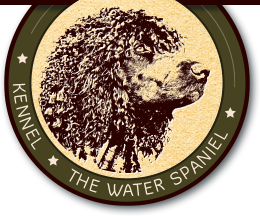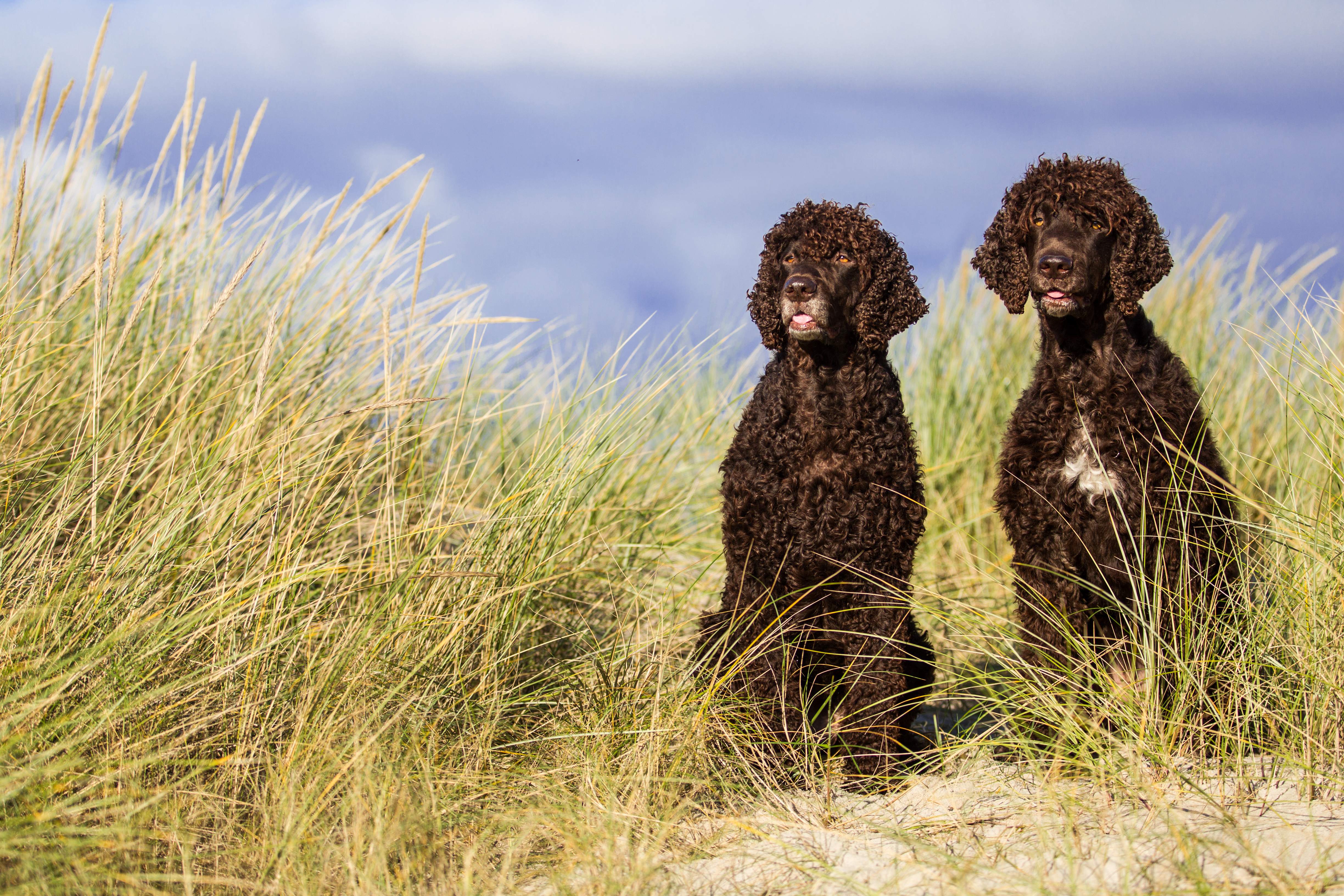Irish Water Spaniel - History - Geschichte
Der Ursprung des Irischen Wasser Spaniels liegt im Verborgenen, da es keine detailierten Zuchtaufzeichnungen gab, als die Rasse gegründet wurde. Es ist nach wie vor unklar, ob der Irische Wasser Spaniel eine uralte Rasse ist, deren Hinweise auf persischen Manuskripten von vor 4000 Jahren auftauchen oder ob die Rasse neueren Datums ist. Auch taucht der IWS in dem Buch "History of the Foure-tooted Beastes" aus dem Jahre 1607 auf und wird dort beschrieben und gezeichnet als "Water Spagnel" - a rat-tailed curly dog. Insofern gibt es den IWS bereits seit 400 Jahren, doch es ist nicht ganz klar, inwiefern diese Ahnen des IWS mit dem heutigen Rassetypus übereinstimmen.
The Origins of the Irish Water Spaniel are hidden in mystery, as there are no detailed breeding records detailing how the breed has been created. It is still unclear whether or not the Irish Water Spaniel is ancient and shows references to old Persian manuscripts of even four thousand years before Christ, or also printed in 1607, the book "Historie of the Foure-tooted Beastes", describes and illustrates the "Water Spagnel" a rat-tailed curly dog.
But since we did not found evidence of documented breeding to trace its history, it is not sure that these dogs have anything to do with the modern Irish Water Spaniel. So far we have to date the beginning of the Irish Water Spaniel to the year 1830 and to the person Justin McCarthy a hunter and a field sport enthusiast. The first known painting of an IWS was done in 1841. It is not known whether McCarthy saved a dying breed or "manufactured" one from the different varieties at the time.
Was wir wissen ist, dass der Stammvater der IWS Zucht Justin McCarthy aus Dublin im Jahre 1830 mit seinem Rüden "Boatswain" die Zucht begründete. Leider hinterliess er keine Informationen bezüglich der Herkunft des Rüden oder der Hündinnen. Man weiss also nicht wirklich, ob er die Rasse aus vorhandenen Hunden "ins reine" züchtete oder ob er die Rasse "neu gegründet" hat. Aber ohne Zweifel hat er Rohmaterial zur Zucht verwendet. Es gab damals noch mehrere sehr ähnliche IWS-Variäteten in Irland. a) den nördichen IWS - eher kurze Ohren mit wenig Behaarung an Ohren und Beinen aber dichten Locken am Körper, der Farbe braun mit mehr oder weniger vielen weissen Flecken; b) und den südlichen IWS - mit längeren Ohren und deutlich mehr Behaarung am ganzen Körper aus dichten braunen kurzen Locken ohne weisse Flecken. Der IWS wie wir ihn heute kennen, folgt mehr dem Bild des südlichen IWS aus Irland. Der IWS wurde sehr schnell berühmt und bei Jägern und englischen Sportsman beliebt auf Grund seiner Ausdauer und Unermüdlichkeit im Apportieren, seiner extremen Robustheit im kalten Wasser des Nordatlantiks und seiner hervorragenden Nasenleistung.
But one thing he did do was to fix the type; no existing breed of dog has a more marked individuality of type and no breed has shown less inclination to diverge from it. Unfortunately “the Father” of the modern Irish Water Spaniel Justin McCarthy of Dublin did not reveal who his dog Boatswain was and where it came from. But without doubt, with this dog he started the modern breed of Irish Water Spaniel in its today known look. Nevertheless, even a manufactured breed needs raw materials and in this respect references to a northern and southern country water spaniel was found in Ireland prior to the 19th century. Both were distinct types in terms of colour and size. The Northern dog has short ears, with little feather on them or on the legs, but with considerable curls in this coat. His colour was liver with more or less white spots. The Southern dog was invariably solid liver with ears long and well feathered with the entire coat consisting of short, crisp curls.
The IWS as we know it today, more closely follows the variety found in Southern Ireland. The Irish Water Spaniel was quickly received by both Irish and English sportsmen for its bold and daring retrieves, its extreme hardiness in the cold North Sea waters, its great nose abilities and its superb disposition.

